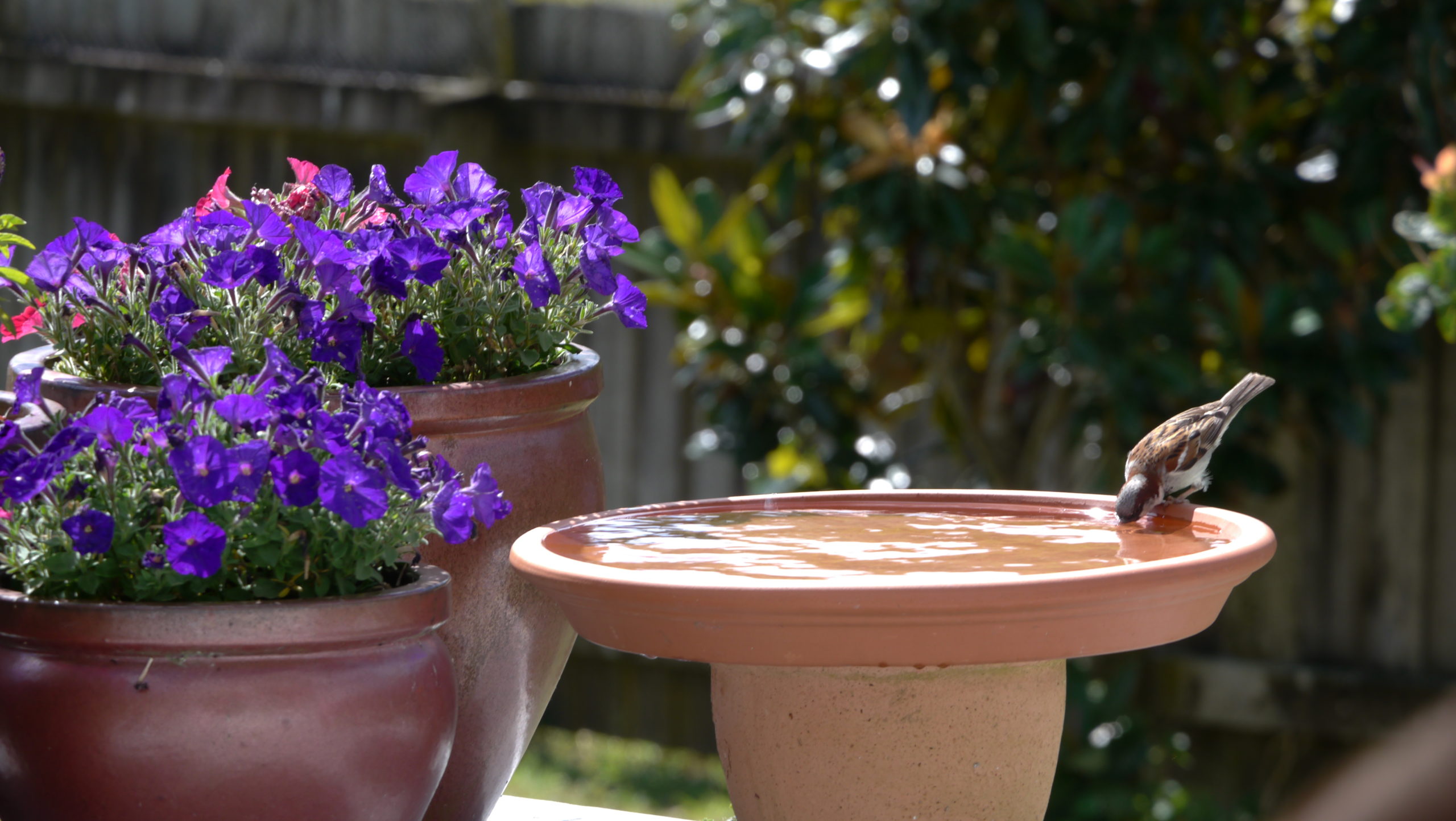When we first moved into our house/garden 12 years ago there was something missing. There was very few if any birds that would visit the garden and it was lacking. It was like the garden was dead in someway. After several years of providing watering holes/birdbaths, planting trees/shrubs and feeding the birds, the garden is now a very different and better place, more in tune with nature. If you want your garden to be a pleasure to be in, below are some key features of landscape design that will help.
I recently have been watching the documentary series, Fight for the Wild also available on Youtube. The episodes document the devastation caused by introduced animals like rats, stoats and possums on the birdlife of New Zealand, especially our native birds. The battle for preserving many of our native species from going extinct, including various reptiles/insects, has become a significant concern for many New Zealanders.
How can we help to benefit the birdlife but also deter those animals like rats?
Without birds we would have a hard time controlling all the bugs.
Add Water:
Animals are attracted to water for bathing and drinking, especially during hot summer months.
The above photo shows a simple, budget-conscious way to incorporate a birdbath by simply placing a large clay saucer on a pot. For larger birds like Tui, you will need a larger basin or specific birdbath. You can increase your budget to reflect the style of your house/garden.
Tip: Place the birdbath in a clear site and away from cats. Place the birdbath within viewing distance of a window. Add other pots/containers with flowering seasonal colour, which also helps birds land on before hopping onto the birdbath. Clean and fill when necessary on average twice a week. It takes a few weeks for birds to build trust, so be patient.
Add food:
Additional food helps birds build fat stores, especially over the winter months.
It makes sense to feed your food scraps to birds ( grains/bread/fruits) rather than composting or throwing in the rubbish. You can place out food scraps like bread and fruit cores. Place the chunks of food on a clear site so that any birds can see predators like cats. If you have a bigger budget, then a bird feeder can be incorporated. I have seen Tui feeders filled with a sugar solution attract many Tui into a garden.
Tip: Place Tui feeder higher up in a suitable tree or pole that will still allow access to change.
Planting more fruit trees in your garden will help feed many birds who like fruit. Cover fruit trees with nets if you don’t want birds to eat all the fruit.
A selection of fruit from apples, pears and plums will help. For birds that are nectar-feeding like Tui, you can plant trees like Kowhai, cherry trees,
Pohutukawa, Callistemon/bottlebrush, flaxes, Banksia, and Rewarewa.
To help feed the bees who benefit our gardens via pollination. I would recommend lavender and rosemary.
Add Shelter:
Many birds live in trees and taller shrubs. By having a structured garden with a balance of trees and shrubs, you can also provide a place for birds to nest.
Smaller gardens have to sometimes multi-task when it comes to getting the most out of it. Having a structured garden in a thinner border is typically done by arranging the plants in tiers. To help do this, we remove the lower branches of trees ( pollarding). Tiering allows the space underneath the trees to be utilised with other plants. Hedges are often used to help with screening but can also be an excellent place for birds to nest. Plants like Pittosporum, Griselinia, Eugenia all make good hedges for birds to nest.
Deterring the pests:
When making your garden safe for birds, you are also helping with creating a safer zone for the wider community and natural native landscapes.
Trapping:
Trapping is the preferred method used by the Department of Conservation as it is relatively humane in that it is a quick death for the animal. Place traps in known areas near woodpiles, compost heaps down fence lines. Rats and mice tend to use known walkways, so it makes sense to place traps near these. I have found for rats and mice the intruder traps from Mitre10 excellent and have caught rats in my external garage. There are traps for different animals, and animals like stoats need a much stronger unit. ( DOC250 traps) For those who live on lifestyle blocks – Stoats use river/ridges and roadways.
Baits:
Rat bait is very effective, although it has some downsides in being not as humane. Place rat bait away from areas that dogs and children might eat. You can purchase a bait station to help avoid other animals eating the bait. Place bait traps in the areas that rats/mice use. Stoats are attracted to rabbit baits, and new artificial long-lasting lures are now becoming available to lure these predator animals into traps.
Other:
In the bigger picture, due to general caution, other forms of control are not being used. These include developing biological methods and chemical methods of contraception. A survey conducted in 2005 of 1000 participants by the Department of Conservation concluded that the public was not in favour of these alternative methods.
You can deter possums from climbing trees by wrapping a piece of sheet metal/aluminium around the trunk.
Compost heaps are areas where rats and mice love to frequent. I bury kitchen scraps and cover them with soil, this also will help reduce flies.
Good luck with your gardening, and a benefit for the birds will ultimately benefit everyone.


Thanks very interesting blog!